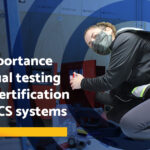What are the main types of DAS? Which one do you need?
Introduction
Distributed Antenna Systems are a common requirement for most building structures. Whether it is a public safety, code, or building comfort/experience requirement, a DAS system serves to provide and improve carrier coverage.
DAS systems are, therefore, a common requirement for most building structures in the US. Depending on the building type, size, regulation, and, most importantly, your needs will vary in requirements and specifications.
Therefore, this versatility is highly scalable and designed to work around all applications, providing businesses and users exceptional coverage, productivity, comfort, and safety throughout a building structure.
Fundamentally though, different types of DAS systems exist, as they serve a specific purpose and need to work around different engineering and budgeting constraints.
This blog post covers the different types of DAS systems and which one might be a potential fit for you.
Indoor DAS
Indoor DAS is the most common DAS system installed by businesses like hotels, libraries, conference centers, closed-roof stadiums, offices, and corporate spaces.
It is installed in buildings and provides wireless coverage for many users that span multiple floors, large surface areas, and coverage issues.
It’s also most frequently adopted in buildings with bad phone reception, particularly in signal-blocking materials such as low-E glass, thick cement walls, and a dense number of users.
This type of system is versatile with variants that offer passive and hybrid power options, placing costs at less than Outdoor DAS and Active DAS systems.
Outdoor DAS
Outdoor DAS systems are indoor DAS systems with weatherproofing. As their name suggests, this system is dedicated to outdoor applications for venues like stadiums, resorts, campuses, parks, and more.
While essentially the same system of antennas and nodes, an outdoor DAS requires Remote Radio Heads, RHHs, which are housed in weatherproof outdoor enclosures. They are placed on rooftops, poles, or walls to increase outdoor carrier coverage.
Hybrid DAS
A hybrid DAS is a combination of both indoor and outdoor DAS. The indoor portion of the hybrid system is usually installed inside a building, while the outdoor portion is installed outside the building.
This type of system provides coverage for areas that require a dual application through a single system that provides a single zone, bypassing wireless handoff issues. A Hybrid DAS is a single system that is both scalable and as reliable as can be configured to the building’s needs.
Active and Passive DAS
Among the most common type of Peer Communications installed today is Active DAS, which essentially means that components require a power source to operate.
The system utilizes fiber optic cables to connect with remote nodes. In contrast, a Passive DAS system foregoes the fiber optic cables in most cases and makes use of Bi-Directional Amplifiers or BDAs.
Passive DAS is a system that uses the existing cellular network to distribute cellular signals. It’s an ideal solution for areas with a need for additional coverage on a budget for small buildings and office spaces.
Conclusion
DAS is a great way to improve your building and venue network coverage by offering unparalleled network access, efficiency, and safety.
Different businesses require different applications, and while there are universal DAS solutions, there is no “one size fits all.”
This is where our DAS systems engineers can help you value-engineer a DAS system that covers your needs. Contact us to learn how we can help you assess your need for a DAS system and design a bespoke system that works for your old building’s code requirements.
Keep up with our updates and announcements on LinkedIn and Facebook, and check out our other blog posts to learn more about our DAS solutions.





